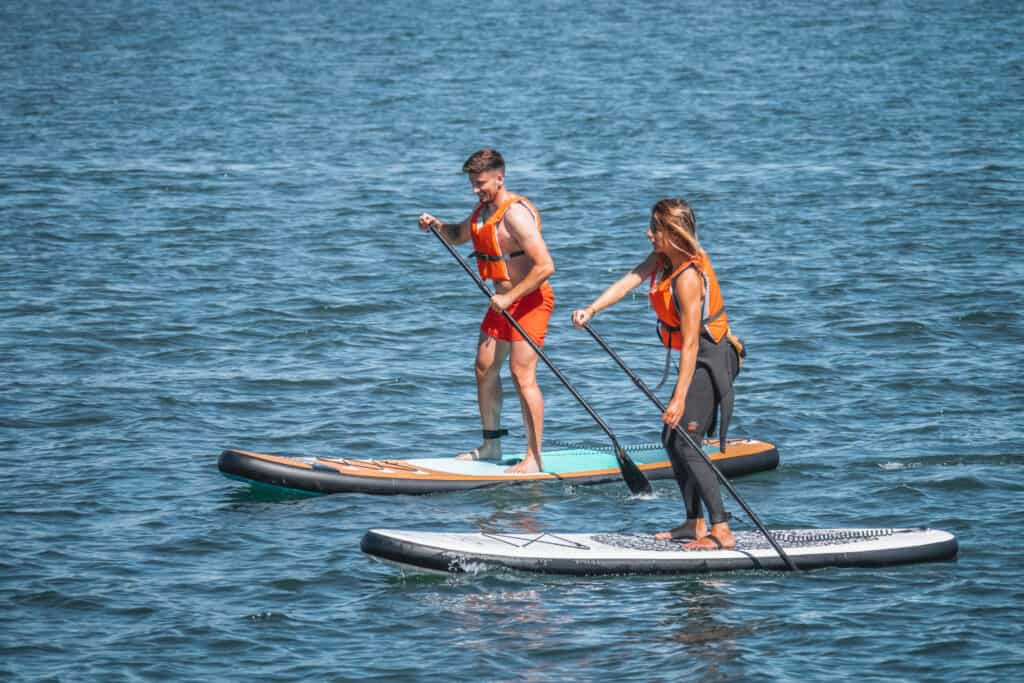Are you an enthusiastic paddleboarder looking to make the most of your summer on the water? Choosing the right time to practice paddleboarding can greatly enhance your experience and ensure that you have an enjoyable and safe time on the water. In this article, we will guide you through the process of selecting the best time to practice paddleboarding during the summer season.
Introduction: The Importance of Choosing the Right Time
Paddleboarding is a wonderful way to explore the water and enjoy nature. To make the most of your paddleboarding experience, it’s crucial to choose the best time for your practice sessions. By considering various factors such as weather conditions, wind speed, water temperature, crowd levels, and tidal patterns, you can ensure a safe and enjoyable paddleboarding experience.
Factors to Consider When Choosing the Best Time
- Weather Conditions
Before heading out on the water, it’s essential to check the weather forecast. Choose days with clear skies and minimal chances of rain or storms. While some paddleboarders enjoy the challenge of paddling in windy conditions, it’s generally better to avoid strong winds, as they can make it difficult to maintain balance and control. - Wind Speed and Direction
Wind plays a significant role in paddleboarding. Opt for days with light to moderate winds, as they provide a pleasant paddling experience. Be aware of the wind direction, as it can impact your paddling route and overall stability on the board. Paddling against the wind can be strenuous, so plan your session accordingly. - Water Temperature
During the summer, water temperatures can vary depending on your location. If you prefer warmer water, plan your paddleboarding sessions during the peak hours of the day when the sun has had time to heat the water. If you enjoy cooler temperatures, consider paddling in the early morning or evening when the water has had a chance to cool down. - Crowd Levels
If you prefer a peaceful and uninterrupted paddleboarding experience, avoid crowded areas. Choose less popular locations or paddle during off-peak hours when there are fewer people on the water. This will not only provide you with a more serene experience but also reduce the chances of collisions or accidents. - Tidal Patterns
If you are paddleboarding in coastal areas, it’s essential to consider tidal patterns. High and low tides can significantly affect the water conditions, making it easier or more challenging to paddle. Consult tide charts or local authorities to plan your paddleboarding sessions around favorable tidal conditions.
Early Morning: The Calm and Serene Experience
Heading out for a paddleboarding session in the early morning can be a serene and tranquil experience. As the day begins, the water is often calm, and the air is still. The soft morning light creates a beautiful ambiance, and you may even spot some wildlife as you glide across the water. This time of day is perfect for meditation and connecting with nature.
Late Afternoon: Catch the Cooling Breeze
In the late afternoon, the temperature starts to cool down, and a refreshing breeze often picks up. This time of day is ideal for paddleboarders who enjoy a bit of a challenge, as the wind might be slightly stronger. It’s a great opportunity to practice your paddling skills and build strength while enjoying the beautiful surroundings.
Evening: The Beauty of Sunset Paddleboarding
Paddleboarding during the evening provides a unique and breathtaking experience. As the sun begins to set, the water and sky are painted with vibrant colors, creating a stunning backdrop for your paddleboarding adventure. It’s a magical time to be on the water, offering a sense of peace and tranquility. However, be mindful of decreasing visibility as darkness falls and plan your session accordingly.
Safety Precautions for Paddleboarding
- While paddleboarding is a fun and rewarding activity, it’s important to prioritize safety. Here are some essential safety precautions to follow:
- Wearing a Personal Flotation Device (PFD): Always wear a properly fitted PFD to ensure your safety in case of accidents or unexpected falls into the water.
- Checking the Weather Forecast: Before heading out, check the weather forecast to avoid unfavorable conditions such as storms or strong winds.
- Informing Someone About Your Plans: Let a friend or family member know about your paddleboarding plans, including your intended location and estimated return time.
- Using a Leash: Attach a leash to your paddleboard to prevent it from drifting away from you if you fall off. This will make it easier to retrieve your board and ensure your safety.
- Being Mindful of Other Watercraft: Stay aware of your surroundings and be respectful of other water users, such as boats, kayakers, or swimmers. Maintain a safe distance and follow any applicable rules or regulations.
Conclusion
Choosing the best time to practice paddleboarding in the summer can greatly enhance your overall experience. By considering factors such as weather conditions, wind speed, water temperature, crowd levels, and tidal patterns, you can ensure a safe and enjoyable time on the water. Whether you prefer the calmness of the early morning, the cooling breeze in the late afternoon, or the beauty of sunset paddleboarding, there’s a perfect time for everyone to enjoy this exciting water activity.
Frequently Asked Questions (FAQs)
Is paddleboarding suitable for beginners?
Yes, paddleboarding is suitable for beginners. It’s a relatively easy activity to learn, and with some practice, anyone can enjoy paddleboarding.
Can I practice paddleboarding in any weather conditions?
While paddleboarding is possible in various weather conditions, it’s recommended to choose days with favorable weather, such as clear skies and light to moderate winds, for a more enjoyable experience.
What should I wear while paddleboarding?
Wear comfortable and quick-drying clothing suitable for the weather. Consider wearing a swimsuit or rash guard to stay cool and protect your skin from the sun.
Are there any age restrictions for paddleboarding?
There are no specific age restrictions for paddleboarding. However, children should always be accompanied by adults, and it’s important to assess each individual’s swimming abilities and comfort level in the water.
Can I bring my pet along while paddleboarding?
Yes, paddleboarding with pets can be a fun experience. Make sure your pet is comfortable in the water, use a pet-specific flotation device if needed, and consider their safety and behavior around watercraft and other people.



